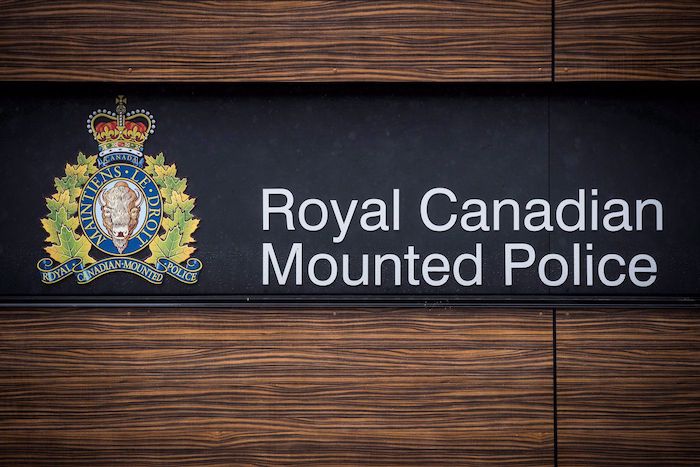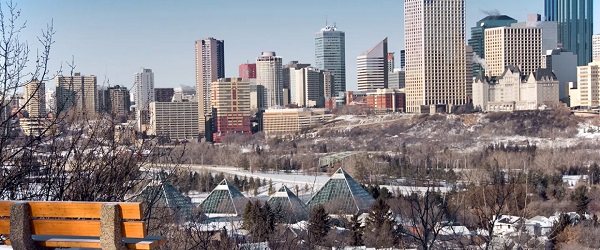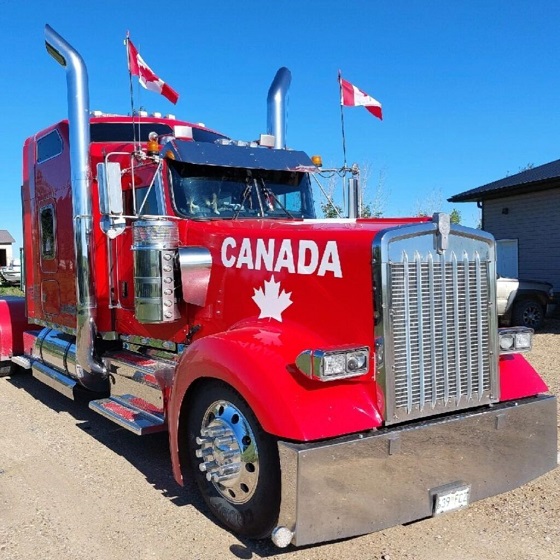Alberta
Province introduces civilian oversight of RCMP in Alberta: Committees to oversee RCMP service delivery

Alberta’s government is making sure communities have a say in how they are policed by the RCMP.
Ensuring Albertans are kept safe is a priority for Alberta’s government, which is why it introduced and passed the Police Amendment Act, 2022 in the fall session of 2022. This important piece of legislation is strengthening RCMP ties to the communities they serve and improving police accountability by mandating civilian governance bodies for municipalities policed by the RCMP. An order in council for the legislation was signed today, with the new regulations coming into force March 1, 2025.
The creation of the municipal and regional policing committees and the Provincial Police Advisory Board will ensure large and small municipalities have a role in setting province-wide policing priorities and performance goals for the RCMP to ensure service delivery reflects and addresses local needs.
The changes coming into force through the amendments and new regulations represent a collaborative effort on the part of municipalities, the RCMP and Alberta’s government to improve public safety in communities throughout the province.
“By creating new civilian governance bodies, we’re responding to Albertans’ long-standing desire for more say in how the RCMP police their communities while advancing a paradigm shift that sees local police across the province as an extension and a reflection of the communities they serve. Unique communities have unique public safety priorities and the creation of civilian governance bodies will address this issue. Creating mandatory civilian governance bodies also ensures accountability, as officers will be held responsible for their actions and behaviour.”
“Amendments to the Police Act support your Alberta RCMP’s ongoing efforts to ensure that communities have a strong voice in their policing priorities. In particular, it will assist our work on local resourcing, responding to calls for mental health and addictions issues, targeting prolific offenders, and dealing with hate crimes. The Alberta RCMP welcomes any changes or enhancements to oversight and governance that help us meet the needs of the communities we serve.”
“Our association’s 265-member communities welcome the provincial government’s effort to build stronger ties between the RCMP and the communities they serve. We hope these policing committees and the Provincial Police Advisory Board lead to improved public safety in communities throughout Alberta.”
Municipal and regional policing committees
Communities with municipal policing contracts and populations of more than 15,000 will be required to appoint municipal policing committees to oversee RCMP service delivery for their area. These committees will work with elected municipal officials to set policing priorities for the community, report on initiatives to support those goals, and create safety plans with their local RCMP detachments, authorities and agencies.
RCMP-policed communities with populations between 5,000 and 15,000 will be represented by regional policing committees to which they will be required to recruit and appoint members. These civilian committees will represent the interests and concerns of the public to the RCMP leadership in their district, work with local officials to identify and address public safety concerns for their region, and report on the implementation of programs and services to address them.
The Provincial Police Advisory Board
Small and rural communities policed by the RCMP with populations under 5,000 will be represented by a new advisory board. The Provincial Police Advisory Board will represent the interests and concerns of Albertans in these communities, support integrated safety planning and liaise with Alberta’s government, the RCMP and municipalities to align policing priorities and resources to help address local concerns and challenges. The 15-person board will include dedicated seats for representatives from Alberta Municipalities, Rural Municipalities of Alberta, and First Nations and Métis communities, as well as community representation for each of the province’s RCMP districts.
Quick facts
- The Police Amendment Act, 2022 received royal assent on Dec. 15, 2022, with the aim of improving police accountability, strengthening ties with communities and enhancing public confidence by reforming existing policing practices.
- The Police Amendment Act, 2022 made a number of amendments to the Police Act, including the creation of civilian governance bodies in jurisdictions policed by the RCMP.
- The Public Safety Statutes Amendment Act, 2024 received royal assent on May 16, and included amendments that allow for the regulation of municipal police committee memberships.
- Both the Police Amendment Act, 2022 amendments and the new regulations created to support these municipal and regional civilian governance bodies will come into force on March 1, 2025.
Related information
Alberta
Alberta’s new diagnostic policy appears to meet standard for Canada Health Act compliance

From the Fraser Institute
By Nadeem Esmail, Mackenzie Moir and Lauren Asaad
In October, Alberta’s provincial government announced forthcoming legislative changes that will allow patients to pay out-of-pocket for any diagnostic test they want, and without a physician referral. The policy, according to the Smith government, is designed to help improve the availability of preventative care and increase testing capacity by attracting additional private sector investment in diagnostic technology and facilities.
Unsurprisingly, the policy has attracted Ottawa’s attention, with discussions now taking place around the details of the proposed changes and whether this proposal is deemed to be in line with the Canada Health Act (CHA) and the federal government’s interpretations. A determination that it is not, will have both political consequences by being labeled “non-compliant” and financial consequences for the province through reductions to its Canada Health Transfer (CHT) in coming years.
This raises an interesting question: While the ultimate decision rests with Ottawa, does the Smith government’s new policy comply with the literal text of the CHA and the revised rules released in written federal interpretations?
According to the CHA, when a patient pays out of pocket for a medically necessary and insured physician or hospital (including diagnostic procedures) service, the federal health minister shall reduce the CHT on a dollar-for-dollar basis matching the amount charged to patients. In 2018, Ottawa introduced the Diagnostic Services Policy (DSP), which clarified that the insured status of a diagnostic service does not change when it’s offered inside a private clinic as opposed to a hospital. As a result, any levying of patient charges for medically necessary diagnostic tests are considered a violation of the CHA.
Ottawa has been no slouch in wielding this new policy, deducting some $76.5 million from transfers to seven provinces in 2023 and another $72.4 million in 2024. Deductions for Alberta, based on Health Canada’s estimates of patient charges, totaled some $34 million over those two years.
Alberta has been paid back some of those dollars under the new Reimbursement Program introduced in 2018, which created a pathway for provinces to be paid back some or all of the transfers previously withheld on a dollar-for-dollar basis by Ottawa for CHA infractions. The Reimbursement Program requires provinces to resolve the circumstances which led to patient charges for medically necessary services, including filing a Reimbursement Action Plan for doing so developed in concert with Health Canada. In total, Alberta was reimbursed $20.5 million after Health Canada determined the provincial government had “successfully” implemented elements of its approved plan.
Perhaps in response to the risk of further deductions, or taking a lesson from the Reimbursement Action Plan accepted by Health Canada, the province has gone out of its way to make clear that these new privately funded scans will be self-referred, that any patient paying for tests privately will be reimbursed if that test reveals a serious or life-threatening condition, and that physician referred tests will continue to be provided within the public system and be given priority in both public and private facilities.
Indeed, the provincial government has stated they do not expect to lose additional federal health care transfers under this new policy, based on their success in arguing back previous deductions.
This is where language matters: Health Canada in their latest CHA annual report specifically states the “medical necessity” of any diagnostic test is “determined when a patient receives a referral or requisition from a medical practitioner.” According to the logic of Ottawa’s own stated policy, an unreferred test should, in theory, be no longer considered one that is medically necessary or needs to be insured and thus could be paid for privately.
It would appear then that allowing private purchase of services not referred by physicians does pass the written standard for CHA compliance, including compliance with the latest federal interpretation for diagnostic services.
But of course, there is no actual certainty here. The federal government of the day maintains sole and final authority for interpretation of the CHA and is free to revise and adjust interpretations at any time it sees fit in response to provincial health policy innovations. So while the letter of the CHA appears to have been met, there is still a very real possibility that Alberta will be found to have violated the Act and its interpretations regardless.
In the end, no one really knows with any certainty if a policy change will be deemed by Ottawa to run afoul of the CHA. On the one hand, the provincial government seems to have set the rules around private purchase deliberately and narrowly to avoid a clear violation of federal requirements as they are currently written. On the other hand, Health Canada’s attention has been aroused and they are now “engaging” with officials from Alberta to “better understand” the new policy, leaving open the possibility that the rules of the game may change once again. And even then, a decision that the policy is permissible today is not permanent and can be reversed by the federal government tomorrow if its interpretive whims shift again.
The sad reality of the provincial-federal health-care relationship in Canada is that it has no fixed rules. Indeed, it may be pointless to ask whether a policy will be CHA compliant before Ottawa decides whether or not it is. But it can be said, at least for now, that the Smith government’s new privately paid diagnostic testing policy appears to have met the currently written standard for CHA compliance.

Lauren Asaad
Policy Analyst, Fraser Institute
Alberta
Housing in Calgary and Edmonton remains expensive but more affordable than other cities

From the Fraser Institute
By Tegan Hill and Austin Thompson
In cities across the country, modest homes have become unaffordable for typical families. Calgary and Edmonton have not been immune to this trend, but they’ve weathered it better than most—largely by making it easier to build homes.
Specifically, faster permit approvals, lower municipal fees and fewer restrictions on homebuilders have helped both cities maintain an affordability edge in an era of runaway prices. To preserve that edge, they must stick with—and strengthen—their pro-growth approach.
First, the bad news. Buying a home remains a formidable challenge for many families in Calgary and Edmonton.
For example, in 2023 (the latest year of available data), a typical family earning the local median after-tax income—$73,420 in Calgary and $70,650 in Edmonton—had to save the equivalent of 17.5 months of income in Calgary ($107,300) or 12.5 months in Edmonton ($73,820) for a 20 per cent down payment on a typical home (single-detached house, semi-detached unit or condominium).
Even after managing such a substantial down payment, the financial strain would continue. Mortgage payments on the remaining 80 per cent of the home’s price would have required a large—and financially risky—share of the family’s after-tax income: 45.1 per cent in Calgary (about $2,757 per month) and 32.2 per cent in Edmonton (about $1,897 per month).
Clearly, unless the typical family already owns property or receives help from family, buying a typical home is extremely challenging. And yet, housing in Calgary and Edmonton remains far more affordable than in most other Canadian cities.
In 2023, out of 36 major Canadian cities, Edmonton and Calgary ranked 8th and 14th, respectively, for housing affordability (relative to the median after-tax family income). That’s a marked improvement from a decade earlier in 2014 when Edmonton ranked 20th and Calgary ranked 30th. And from 2014 to 2023, Edmonton was one of only four Canadian cities where median after-tax family income grew faster than the price of a typical home (in Calgary, home prices rose faster than incomes but by much less than in most Canadian cities). As a result, in 2023 typical homes in Edmonton cost about half as much (again, relative to the local median after-tax family income) as in mid-sized cities such as Windsor and Kelowna—and roughly one-third as much as in Toronto and Vancouver.
To be clear, much of Calgary and Edmonton’s improved rank in affordability is due to other cities becoming less and less affordable. Indeed, mortgage payments (as a share of local after-tax median income) also increased since 2014 in both Calgary and Edmonton.
But the relative success of Alberta’s two largest cities shows what’s possible when you prioritize homebuilding. Their approach—lower municipal fees, faster permit approvals and fewer building restrictions—has made it easier to build homes and helped contain costs for homebuyers. In fact, homebuilding has been accelerating in Calgary and Edmonton, in contrast to a sharp contraction in Vancouver and Toronto. That’s a boon to Albertans who’ve been spared the worst excesses of the national housing crisis. It’s also a demographic and economic boost for the province as residents from across Canada move to Alberta to take advantage of the housing market—in stark contrast to the experience of British Columbia and Ontario, which are hemorrhaging residents.
Alberta’s big cities have shown that when governments let homebuilders build, families benefit. To keep that advantage, policymakers in Calgary and Edmonton must stay the course.
-

 International2 days ago
International2 days agoOttawa is still dodging the China interference threat
-

 Business17 hours ago
Business17 hours agoThere’s No Bias at CBC News, You Say? Well, OK…
-

 espionage2 days ago
espionage2 days agoCarney Floor Crossing Raises Counterintelligence Questions aimed at China, Former Senior Mountie Argues
-

 Business1 day ago
Business1 day agoTaxing food is like slapping a surcharge on hunger. It needs to end
-

 International1 day ago
International1 day ago2025: The Year The Narrative Changed
-

 COVID-192 days ago
COVID-192 days agoJudge denies Canadian gov’t request to take away Freedom Convoy leader’s truck
-

 Energy2 days ago
Energy2 days ago75 per cent of Canadians support the construction of new pipelines to the East Coast and British Columbia
-

 Health1 day ago
Health1 day agoFDA warns ‘breast binder’ manufacturers to stop marketing to gender-confused girls













